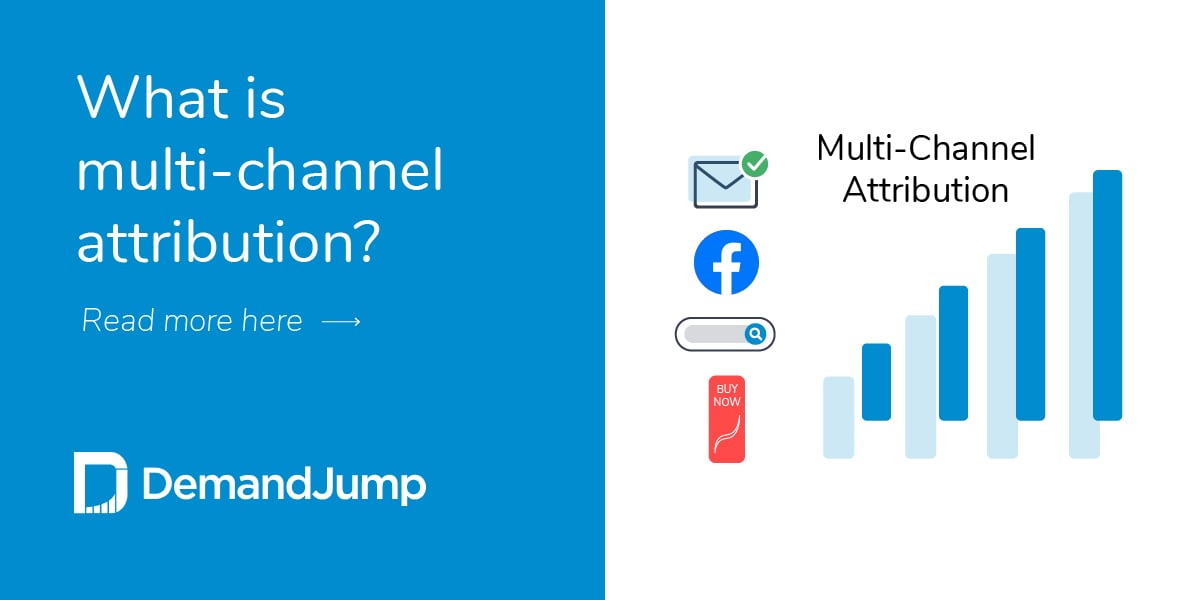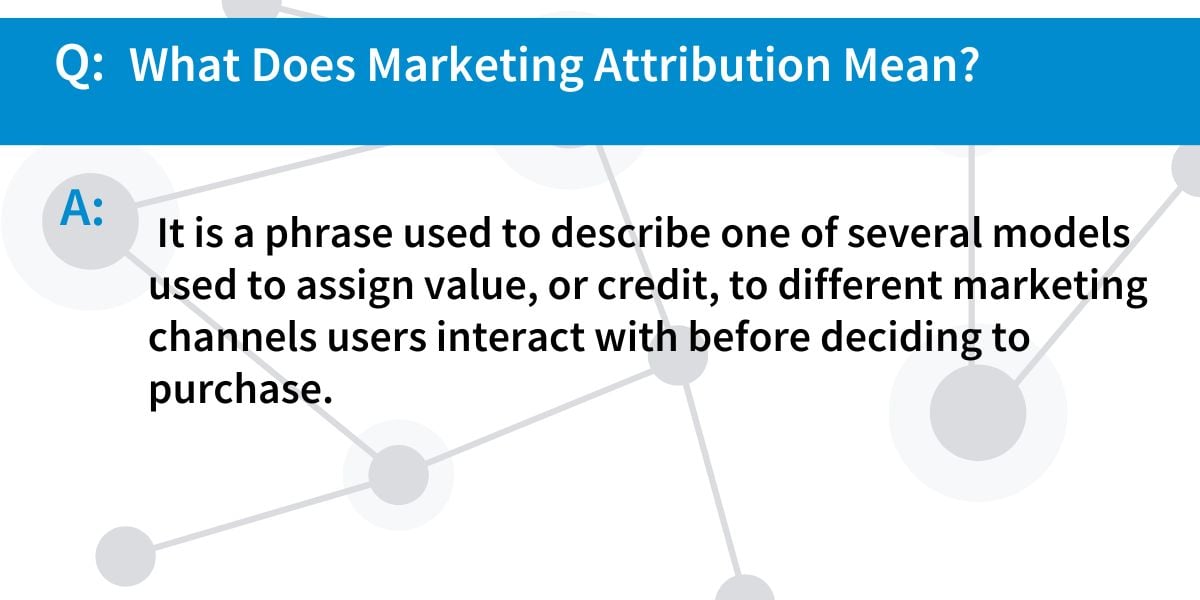What Is Multi-channel Attribution?
March 27, 2020 •DJ Team

Marketers want to know what led to every sale, if possible. That desire means marketing pros need a way to assign value to the actions customers take before taking the decisive step to buy a product or service.
That's the reason why so many marketers rely on marketing attribution.
Marketing Attribution
What does marketing attribution mean?
Marketing attribution is a phrase used to describe one of several models used to assign value, or credit, to different marketing channels users interact with before deciding to purchase. Using these attribution models helps marketers understand the customer journey, by understanding where customers interacted with their brand before purchase and how. They do this to make smarter marketing investments and gain clarity about what strategies lead to the desired actions.
There is no one correct model, and there are varied attribution methods available. Understanding the meaning of marketing attribution helps businesses better use limited marketing resources and deliver more ROI.

Attribution Models
There are multiple marketing attribution models available, each with advantages and disadvantages. Here is a closer look at the most common.
- Data driven attribution model. This model is appropriate for multitouch marketing strategies. It takes the guesswork out of applying credit to channels or touchpoints. Instead, it uses data to understand the behaviors customers exhibit when making buying decisions. The biggest disadvantage is that these models are often among the most expensive. However, they are the best to use when using multiple channels and trying to pinpoint real ROI. With a clear view of the customer journey, data driven attribution modeling lets you see clearly which elements are working within and across channels - also known as cross platform attribution.
- Last-click attribution model. This attribution model is the default for Google Analytics. It delivers all the credit to the last traffic source that resulted in a sales conversion. It's a simple, rough-cut way to see what actions result directly in sales.
- First-click attribution model. The model is analogous to the last click model, and assigns all credit to the first channel a customer interacted with before ultimately converting. In the marketing attribution example above, all credit would go to the email. Both of the models run the risk of oversimplifying and inaccurately depicting true buyer motivation.
How do you make an attribution model? There are excellent commercial products available to help you build the right model for your company. Whether you use an established vendor or customize a solution, you need to be clear about the type of sales cycle your business uses, how long it runs and how much of it is done online. Some other steps in the process include:
- Define your funnel stages and what's included in each, from leads and opportunities to qualified leads to customers
- Set goals for your marketing campaign
- Use tags for each important marketing action
- Capture data from each customer interaction, including channels, downloads, returns and refunds, offline orders and social shares
- Assign a value to each engagement
- Generate multiple reports that relate marketing impact to the sales pipeline, revenue, channel performance, ROI, campaign performance and account-specific marketing metrics
- Test your model and reassess
Multi Channel Attribution
Multi channel attribution is a subset of marketing attribution. It recognizes that customers are exposed to multiple touches and outreaches during the journey to a purchase.
Multi touch attribution acknowledges that most customers have multiple touchpoints with a product or service before buying. Multi channel attribution divides the credit for the purchase across various touchpoints. While there are several models, each assigns a weight to the various touchpoints, assigning different values to different engagement points. Multi channel models inform on how different channels impact conversions through the journey. For example, email marketing attribution is encompassed in a multi channel approach. Which sends result in conversions or future marketing touches? Which sends do not contribute to eventual conversions? Both questions answered with a multi channel approach.
Here are the most common multi channel attribution models:
- Linear attribution model: This is the simplest multi channel model, assigning revenue credit evenly to every touchpoint. It can illustrate the customer journey but makes it difficult to determine which touchpoints are most influential
- Time decay model: This model assigns higher weights to touchpoints that happen closer to the sale and is particularly helpful in B2B sales which typically have longer sales cycles
- Position based models: If your marketing team has a clear sense of the buying journey, this is a good model to use. In position based modeling, marketers assign different weights to different touchpoints. It's helpful for teams that have campaigns intending to focus on one marketing stage, such as lead generation, opportunity creation or first touch
Attribution Tools
There are many commercial multi channel attribution tools available. Each provides models and plug-ins to customize the analysis of your marketing campaigns. Many of these software solutions include other marketing tools, including conversion tracking and customer journey modeling. These attribution platforms provide a single source for marketing analytics.
Marketing attribution is a powerful way to drive analysis and impact, helping understand campaigns and adjust future budget allocations to deliver the greatest ROI.
Featured Articles
Categories
- Attribution Tracking (13)
- Channel Optimization (11)
- Consumer Insights (68)
- Content Marketing (251)
- Data Science (8)
- Digital Marketing (6)
- Digital Transformation (26)
- Enterprise (10)
- Lead Generation (14)
- Market Intelligence (8)
- Marketing Analytics (39)
- Marketing Attribution (57)
- Marketing Management (153)
- Marketing Operations (86)
- Organic Search (222)
- Paid Search (52)
- Pillar-Based Marketing (63)
- Programmatic Advertising (9)
- SaaS Content (14)
- SaaS Marketing (29)
- Search Marketing (111)
- SEO Keyword Research (28)
- SEO Pillar (18)
- SEO Strategy (46)
- SMB (5)
- Website Content (12)


